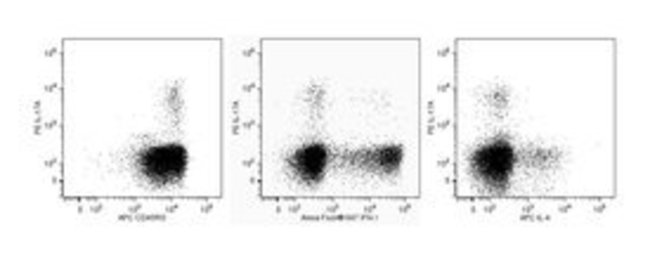IL-17A Mouse anti-Human, PE, Clone: SCPL1362, BD, Mouse Monoclonal Antibody, Each

Details:
Human IL-17A, also known as IL-17, is a proinflammatory cytokine that is encoded by the IL17A gene in chromosome 6. IL-17A is produced as a disulfide-linked homodimer comprised of two mature 136-amino acid polypeptides. It is a member of the IL-17 family of structurally related cytokines, designated IL-17A through IL-17F. Activated memory T cells, especially Th17 cells (specialized IL-17A-producing CD4 T cells distinct from Th1 and Th2 cells) produce IL-17 and provide protective immunity against pathogens. Activated CD8 T cells, γδT cells, NK cells and neutrophils can also be activated to produce IL-17A. IL-17A binds to and exerts its biological activity through IL-17 receptors (IL-17R) that are expressed by a variety of target cells including fibroblasts, epithelial and endothelial cells, monocytes/macrophages and mast cells. The ubiquitous IL-17R expression pattern may explain the broad tissue responsiveness to IL-17. IL-17 induces stromal cells to secrete cytokines and chemokines involved in inflammatory and hematopoietic processes. For example, IL-17 induces fibroblasts to produce IL-6, IL-8, G-CSF and express increased surface ICAM-1. The SCPL1362 antibody reacts with human IL-17A.Host Species: MouseClone: SCPL1362Isotype: IgG1 κSpecies Reactivity: HumanIntracellular Staining
Additional Information
| SKU | 10134112 |
|---|---|
| UOM | Each |
| UNSPSC | 12352203 |
| Manufacturer Part Number | 560438 |
